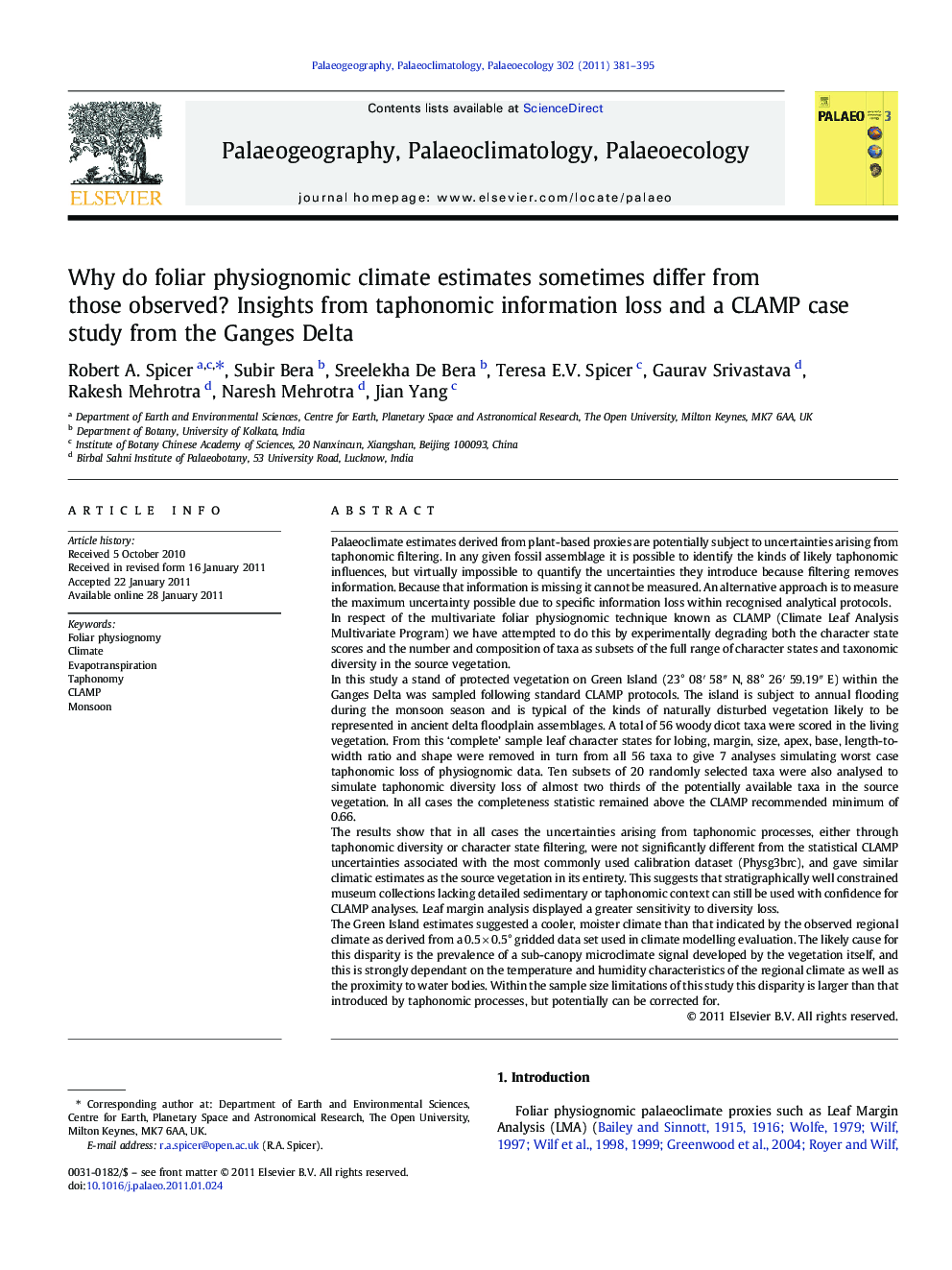| کد مقاله | کد نشریه | سال انتشار | مقاله انگلیسی | نسخه تمام متن |
|---|---|---|---|---|
| 4467203 | 1622260 | 2011 | 15 صفحه PDF | دانلود رایگان |

Palaeoclimate estimates derived from plant-based proxies are potentially subject to uncertainties arising from taphonomic filtering. In any given fossil assemblage it is possible to identify the kinds of likely taphonomic influences, but virtually impossible to quantify the uncertainties they introduce because filtering removes information. Because that information is missing it cannot be measured. An alternative approach is to measure the maximum uncertainty possible due to specific information loss within recognised analytical protocols.In respect of the multivariate foliar physiognomic technique known as CLAMP (Climate Leaf Analysis Multivariate Program) we have attempted to do this by experimentally degrading both the character state scores and the number and composition of taxa as subsets of the full range of character states and taxonomic diversity in the source vegetation.In this study a stand of protected vegetation on Green Island (23° 08′ 58″ N, 88° 26′ 59.19″ E) within the Ganges Delta was sampled following standard CLAMP protocols. The island is subject to annual flooding during the monsoon season and is typical of the kinds of naturally disturbed vegetation likely to be represented in ancient delta floodplain assemblages. A total of 56 woody dicot taxa were scored in the living vegetation. From this ‘complete’ sample leaf character states for lobing, margin, size, apex, base, length-to-width ratio and shape were removed in turn from all 56 taxa to give 7 analyses simulating worst case taphonomic loss of physiognomic data. Ten subsets of 20 randomly selected taxa were also analysed to simulate taphonomic diversity loss of almost two thirds of the potentially available taxa in the source vegetation. In all cases the completeness statistic remained above the CLAMP recommended minimum of 0.66.The results show that in all cases the uncertainties arising from taphonomic processes, either through taphonomic diversity or character state filtering, were not significantly different from the statistical CLAMP uncertainties associated with the most commonly used calibration dataset (Physg3brc), and gave similar climatic estimates as the source vegetation in its entirety. This suggests that stratigraphically well constrained museum collections lacking detailed sedimentary or taphonomic context can still be used with confidence for CLAMP analyses. Leaf margin analysis displayed a greater sensitivity to diversity loss.The Green Island estimates suggested a cooler, moister climate than that indicated by the observed regional climate as derived from a 0.5 × 0.5° gridded data set used in climate modelling evaluation. The likely cause for this disparity is the prevalence of a sub-canopy microclimate signal developed by the vegetation itself, and this is strongly dependant on the temperature and humidity characteristics of the regional climate as well as the proximity to water bodies. Within the sample size limitations of this study this disparity is larger than that introduced by taphonomic processes, but potentially can be corrected for.
► We test resilience of fossil leaf palaeoclimate proxies to character and taxon loss.
► Analyses were conducted on vegetation on Green Island in the Ganges Delta, India.
► Climate Leaf Analysis Multivariate Program (CLAMP) was resilient to data loss.
► CLAMP yields temperatures that are lower than in regional climate data.
► This effect depends upon the extent of canopy evapotranspirational cooling.
Journal: Palaeogeography, Palaeoclimatology, Palaeoecology - Volume 302, Issues 3–4, 15 March 2011, Pages 381–395